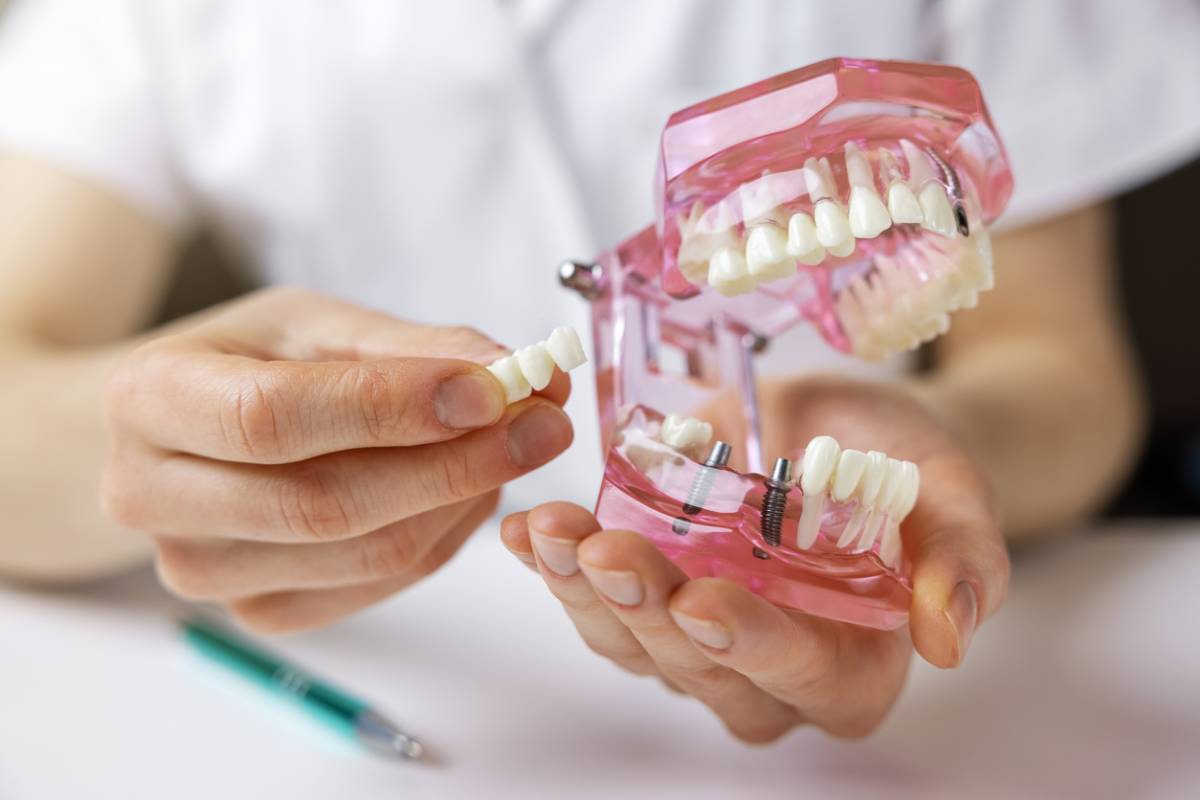Dental bridges are used to replace missing teeth, restore chewing function, and improve the appearance of your smile. In this article, we discuss the common question: How do you care for your new dental bridge?
How to Care for Your New Dental Bridge
A dental bridge is a restoration that mimics the appearance of our natural teeth and can replace one or several missing teeth in a row. Typically, it relies on the surrounding natural teeth for support and literally bridges the gap. This means that the health and strength of your natural teeth that support the bridge are key to its longevity. In some cases, a bridge can be supported by dental implants instead of natural teeth, which also require special care and attention.
Visually, the bridge is positioned flush against the gums, but there is still a bit of space left between the bridge and the gum. This space is needed for the gum tissue to be regularly cleaned with saliva and to prevent the bridge from causing sores on the gums.
However, the fact that there is space between the bridge and the gum also means that plaque, tartar, and bacteria can accumulate there, causing infections and gum disease if not regularly removed. Thus, you have to pay special attention to cleaning the bridge correctly and thoroughly.
Let us talk about the main rules of dental bridge care in more detail.
Maintain a Thorough Oral Hygiene Routine
- Brush your teeth twice a day for two full minutes using fluoride toothpaste. Fluoride is an excellent ingredient for oral health care, as it is proven to reduce bacterial growth in the mouth and make the enamel of natural teeth that support your bridge more resistant to decay.
- Floss every evening, paying special attention to the area under the bridge. Try using special tools, such as interdental brushes and floss threaders, to make the process more straightforward.
- Add a water flosser to your routine to make cleaning under the bridge more effective. A pressurized stream of water helps to wash out food particles that are hard to reach with traditional floss. However, remember that a water flosser should be used in addition to traditional flossing and brushing, but not instead of it.
- Be careful when brushing the bridge and flossing under and around the bridge, and do not snap the flossing thread against your bridge so as not to displace it by applying too much pressure.
- Visit your dentist twice a year for professional cleaning and checkups. Even if you have an effective at-home oral hygiene routine, some plaque can still linger in hard-to-reach places, especially under the bridge. If plaque is not removed regularly, it turns to tartar and can cause decay and gum disease. Using special instruments, your hygienist will be able to remove all the plaque and tartar. Also, during these visits, your dentist will check the integrity of the bridge and the condition of the supporting teeth.
Be Mindful of What You Eat
Eating hard, crunchy foods and foods that require a lot of biting and chewing force can displace, crack, or scratch the bridge. Examples of such foods include hard apples, crackers, nuts, popcorn with seeds, etc. Sticky foods, such as toffee, can displace the bridge as well.
Also, to preserve the appearance of your bridge, we recommend avoiding staining foods and beverages, such as:
- Red wine
- Coffee and black tea
- Berries and fruit juices
- Beverages with artificial dye, such as soda
- Brightly colored spices, for example, curry or red paprika
- Beetroot and carrots
If you consume any of the staining foods or drinks, brush your teeth or at least rinse your mouth immediately after the meal.
Protect Your Dental Bridge from Physical Damage
- Try to avoid such habits as using your teeth as tools or chewing on hard objects because they can damage the bridge.
- Wear a mouthguard if you play contact or extreme sports to protect your bridge and natural teeth from breaking if facial trauma occurs.
- If you notice signs of bruxism—involuntary jaw clenching and teeth grinding, ask your dentist to recommend suitable treatment solutions and wear a mouthguard at night to prevent your bridge and teeth from wearing out.
Make an Appointment at Glendora Family Dentistry
Choosing a reliable and experienced dentist is crucial to having an effective and long-lasting dental restoration solution. Make an appointment at Glendora Family Dentistry today and get a high-quality dental bridge that will serve you for years to come. We look forward to your visit.



